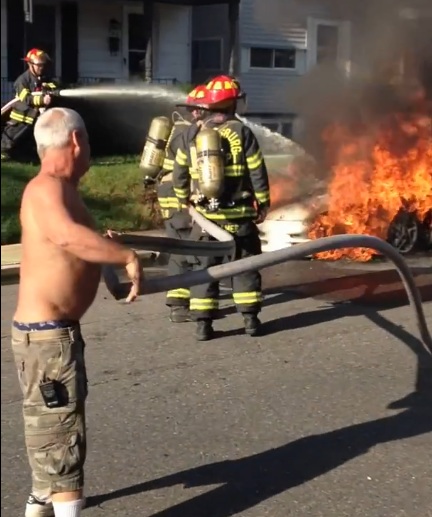A lesson in how to handle an ambush interview
Former DC police officer is confronted by reporter
Looking for a quality used fire truck? Selling one? Visit our sponsor Command Fire Apparatus
Ever since Mike Wallace turned the ambush interview into an art form during the early days of “60 Minutes”, TV reporters have been running up to those suspected of wrongdoing and officials refusing interview requests with the cameras rolling. It can be the only way to get a public official or other newsmaker on camera. Often you will see the person being ambushed trying to avoid the cameras by running, hiding their face, putting hands in front of the camera or even getting into a physical confrontation. Those actions rarely improve the situation for the ambush “victim” and often makes things much worse. That’s why this video (above) is so refreshing. There are many public officials who could learn from this.
The person being confronted is Sean Lojacono. Lojacono was heading to court as part of an effort to get his job back as an officer with Washington, DC’s Metropolitan Police Department. Lojacono was fired for what has been described as an “invasive, unconstitutional anal stop-frisk search” that was caught on video.
Sean Lojacono either has good instincts or his lawyer or someone else trained him well. Instead of being seen running and hiding, Lojacono stopped briefly and provided some very poised answers. The former officer did so in a way that likely also met the goal he and his lawyer had of not saying anything of substance that would impact the case.
In fact, Lojacono had very smart replies for the reporter who was trying to get him to talk about the situation. Lojacono said, “I am about to go into my hearing, so everything that needs to be said will be said in there” and “I am going to say it on the stand.” Those replies make perfect sense and don’t give the impression you have something to hide.
The only criticism is Lojacono saying “no comment” a couple of times. They were unnecessary, especially with the telling your story in the courtroom responses. Still, this is considerably better than what you see in many ambush interviews. Take a look at the example, below, from another police officer accused of wrongdoing.
For some of the best advice on handling ambush interviews, turn to Brad Phillips at Mr. Media Training. Check it out here.





